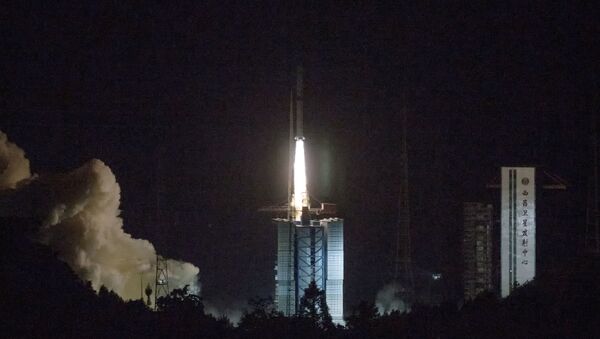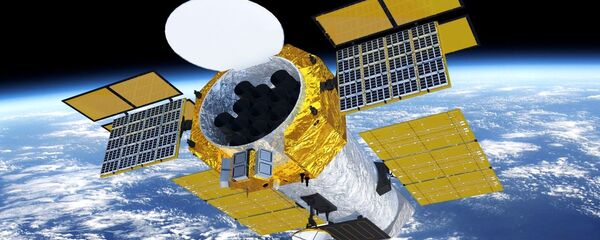The Long March-4C model rocket blasted off from Xichang Satellite Launch Center in southwestern China at 5:28 a.m. local time Monday, the China National Space Administration (CNSA) reported.
Aboard the Long March rocket is the Quequiao, or "Magpie Bridge" communications satellite, destined for the Earth-moon system's L-2 Lagrangian point, a uniquely gravitationally stable location on the far side of the moon. "We designed an orbit at the Earth-Moon Lagrange Point L2 about 450,000 kilometers from the Earth, where a gravitational equilibrium can be maintained, and the relay satellite will be able to 'see' both the Earth and the far side of the moon," said Bao Weimin, director of the Science and Technology Commission of the China Aerospace Science and Technology Corp, according to Space.com.
Queqiao will be the first communications satellite launched to that orbit location, Xinhua reported.
The L-2 point is a valuable location for space travelers seeking to go beyond the moon: two US ARTEMIS probes are already deployed in the area and NASA and other leading space agencies plan to build a refueling station there for future missions to Mars, Sputnik reported.
Lagrange points for the Earth-moon system.
— AeroSpaceGuide (@AeroSpaceGuide) December 10, 2017
Learn more about moon, rockets etc at:https://t.co/Fp3xppFMhx#space #astronomy #telescope #space #station #exploration #sls #boeing #energia #nasa #transport pic.twitter.com/kQW36zEKlt
The rocket also carried two microsatellites, Longjiang-1 and Longjiang-2, which will perform their own radio-astronomy research, Space.com reported.
"The launch is a key step for China to realize its goal of being the first country to send a probe to soft-land on and rove the far side of the moon," Zhang Lihua, manager of the satellite relay project, told Xinhua.
From this vantage point, Queqiao will be able to coordinate further Chinese missions to the moon, such as the upcoming Chang'e-4 lunar probe planned to touch down later this year, which will carry a rover to the lunar surface, Space.com reported. Chang'e-4 will be another human first the Chinese get to check off, being the first rover to visit the far side of the moon, which the Earth never sees due to the moon's tidal locking with our planet.
China's lunar ambitions, and plans…
— Amit Paranjape (@aparanjape) November 7, 2014
"China's Moon Missions Explained (Infographic) http://t.co/hMp7dvEMQ8 pic.twitter.com/C1LxQLecHR"
Queqiao derives from a Chinese folktale. "Magpies form a bridge with their wings on the seventh night of the seventh month of the lunar calendar to enable Zhi Nu, the seventh daughter of the Goddess of Heaven, to cross and meet her beloved husband, separated from her by the Milky Way," Xinhua explained.
The satellite weighs about 400 kg and carries a number of scientific instruments from international contributors. The satellite carries a low-frequency radio spectrometer developed by Dutch scientists to take advantage of the "completely quiet electromagnetic environment" to monitor space beyond the moon, and a lunar optical imaging detector developed by Saudi Arabia. It also carries a reflector for conducting laser-ranging experiments between the relay satellite and a ground observatory, developed by Sun Yat-Sen University, Xinhua reported.
Of course, it carries a slew of communications equipment as well, such as a 5-meter umbrella-shaped antenna, the largest communication antenna ever used in deep space exploration, according to Chen Lan, deputy chief engineer of the Xian Branch of the China Academy of Space Technology, Xinhua reported. The satellite is expected to have a three-year life span.
China has already sent five robotic rovers to the moon since the program began in 2007. Following the anticipated success of Chang'e-4 this November, CNSA hopes to send Chang'e-5 next year, which will hopefully return samples from the moon to Earth, Scientific American reported. Chang'e-5 was delayed from a 2017 launch by a rocket engine failure, so Chang'e-4, a backup built for another mission, was sent instead.



